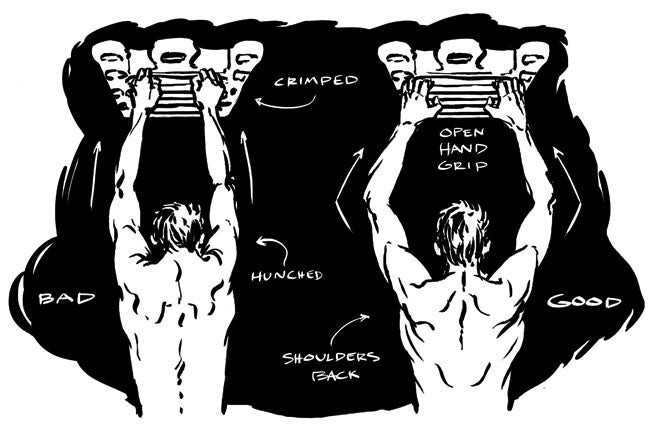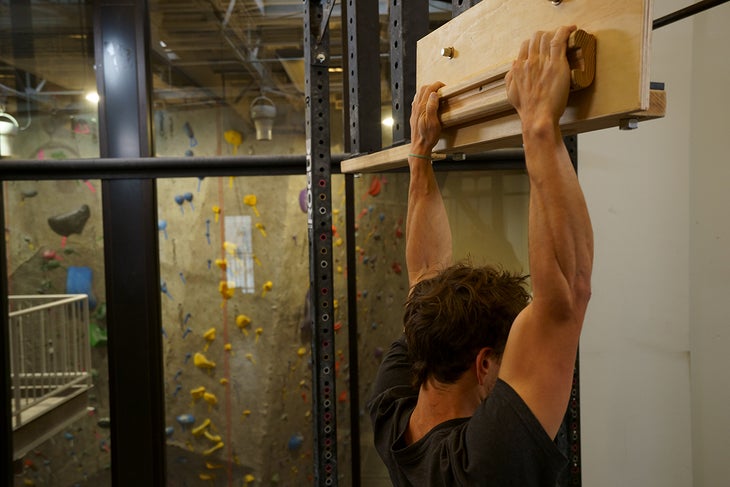Heading out the door? Read this article on the new Outside+ app available now on iOS devices for members! Download the app.
Hangboard training is one of the most time-efficient ways to build hand and finger (or “contact”) strength, especially if you can’t train at a climbing gym. Two or three 30-minute workouts per week can deliver excellent results. All you need is a hangboard—many models are available for about $50—and a little motivation.

The basic exercise is a dead hang from small holds. Mount the board so you can easily reach the holds. You should be able to lower your feet to the ground when you are ready to unweight your hands; letting go and dropping to the floor can strain and damage finger tendons.
Good form on your dead hang will help you avoid injury. Always use an open-handed grip—no crimping. Hang with a slight bend in your elbows, and pull your shoulder blades down your back, keeping body tension high. Practice the form on jugs or a pull-up bar before using the board’s smaller holds.

Begin each session with a full-body warm up. Jumping rope is an excellent option, or take a quick run around the neighborhood. Do a few pull-ups and a bit of shoulder and finger stretching to get the upper body ready. Use the board’s jugs or a bar for the pull-ups; doing pull-ups from small holds puts you at risk for injury.
The Workout
- Using an open-handed grip, grab a matched pair of holds, using all four fingers. Hang for 10 to 15 seconds. If you can hang for more than 15 seconds, use smaller holds; if less, use bigger holds.
- Rest one minute after each hang, and then hang again. Four hangs equals one set.
- Rest five minutes and do another set of hangs on the same holds or ones of similar challenge. Do four sets in all.
- After three weeks, increase the intensity by choosing holds you can only grip for between five and eight seconds. This is the sweet spot for building strength; now that your body had adjusted to the stress of the hang, attempt to do every workout in this zone. (If you can’t hold on for a minimum five-second count, use bigger holds or else risk injury.) As you become comfortable with the demanding nature of the smaller holds and shorter hang time, incorporate different holds into each set.
Hangboarding puts a lot of stress on small muscles and tendons—that’s the point—and this requires that you listen to your body as you progress through the workouts. If you can’t finish a set, end the workout. If your fingers or elbows become sore, take a week off, reevaluate your deadhang form, and ease back into your next training session.